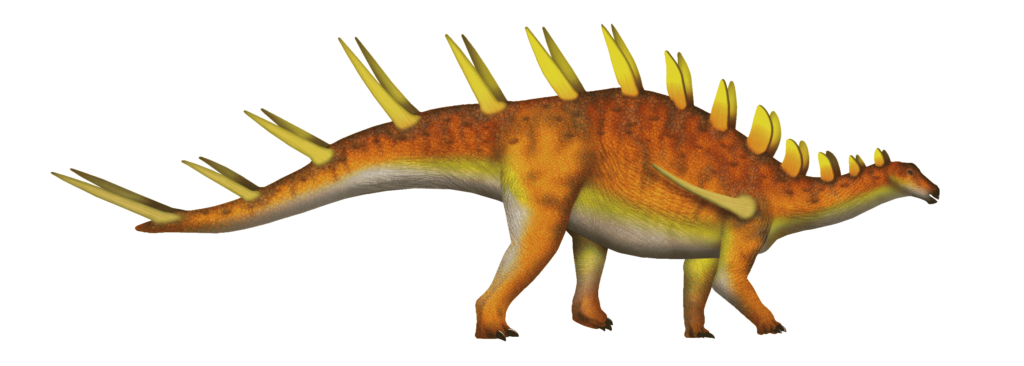The Spiky-Backed Dinosaur
Kentrosaurus was a fascinating dinosaur that lived around 155 to 150 million years ago during the Late Jurassic period.

| Meaning | Spiked lizard [Kentro-saurus] |
| Pronunciation | KEN-troh-sore-us |
| When: | Late Jurassic (about 155–150 million years ago) |
| Where: | Africa (present-day Tanzania) |
| What: | Stegosaur (quadrupedal herbivorous) |
| Weight: | Estimated around 1–2 metric tons |
| Length: | Approximately 4–5 meters (13–16 feet) |
| Diet: | Herbivorous (likely fed on ferns, cycads, and other low vegetation) |
| Discovered: | First described by Edwin Hennig in 1915 |
It was a member of the stegosaur family, known for its distinctive rows of spikes along its back and tail. These spikes were its primary defense against predators.
Kentrosaurus had a relatively small body compared to some other dinosaurs, reaching lengths of about 13 feet. It walked on four sturdy legs and had a low-slung posture. Its most striking feature was its double row of spikes that ran along its back and tail, providing protection from potential attackers.
This herbivorous dinosaur had a beak-like mouth and small teeth suited for chewing tough plants such as ferns and cycads. Kentrosaurus lived in what is now Tanzania, Africa, and likely lived in herds for protection against predators like Allosaurus.
